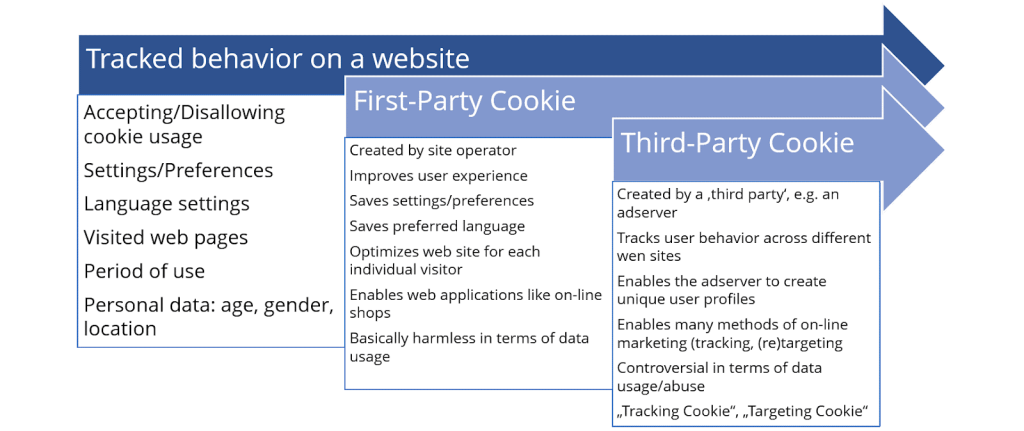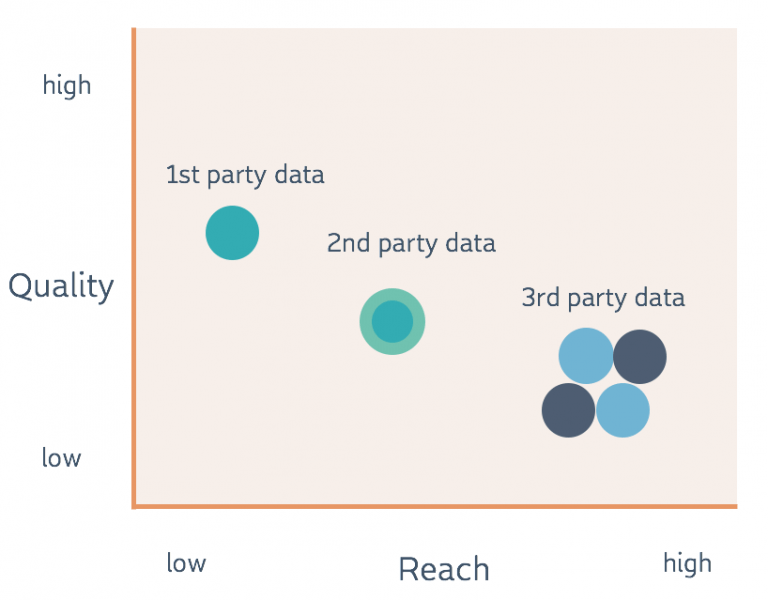Google announced at the beginning of 2020 that third-party cookies will disappear within two years. Apple’s browser Safari already blocks third-party cookies by default. Chrome’s deadline is getting closer, and advertisers, agencies, affiliate marketers, and ad tech are still eagerly looking for alternatives. So, what alternatives do we have?
Table of contents
- Third-party cookies: tech’s legacy
- 2 Alternatives to third-party cookies
- Alternative tracking methods
- Alternatives to third party cookies for users
- Alternatives to third party cookies for advertisers
- Targeting without personal data
- Three benefits of contextual targeting
- A big shift in paradigms
- Contextual targeting in practice
- Conclusion
I had covered the topic of cookies banning already in a previous post a few months ago. However, since things are rapidly changing, I decided to post an update and concentrate more on current possible alternatives and the future without third-party cookies from a broader perspective.
Over the years, third party cookies have become a somewhat outdated technique that is neither user-friendly nor efficient. Standardization and universal identification are lacking, meaning that most of the total traffic and ad potential remains untapped. At the same time, in the background, the privacy of the users is not respected.
Violating privacy has ultimately become fatal for third party cookies.

Privacy has, of course, always been an essential point of discussion. Still, since the General Data Protection Regulation (GDPR) came into power in the EU, which stipulated that users must give explicit permission for the placement of advertising cookies – we have already been able to determine that the end of third party cookies is nearing.
Moreover, when the latest worldwide legislation to protect user data and privacy, such as the European Union’s ePrivacy directive, enters into power, third party cookies the way we know them – will officially no longer be allowed.

As a result of increased privacy awareness among users and tightened laws and regulations, many browsers have identified their data and user privacy features as competitive advantages.
One company has immediately stopped using cookies, and it’s Firefox from Mozilla. Safari (Apple) has already followed their footsteps, and Google has indicated that it will not stop placing tracking cookies immediately, but the company in two years period.
The fact that Google has announced this move is considered in the market as the ‘last straw in the bucket’ that marks the often-quoted phrase: ‘death of third party cookies.’
We can discuss it endlessly, but it is time to let go of the old and focus on the future.
We need to go further and develop a form of advertising that meets consumer demand, is profitable for the advertiser, and delivers more value to publisher brands.
In my opinion, there are two ways we can achieve this.
- We are replacing third party cookies with different tracking technology to ensure that advertisements remain tailored to individual users and behavior in the future.
- We completely let go of collecting personal data and switch to 100% privacy-friendly and legal targeting.
Tough choice.

You can’t have your cake and eat it, too.
Alternative tracking methods
The current situation in the online advertising market was created by a trust problem, not a technology problem.
As a market, we have failed to explain exactly what third party cookies do to the users.
We (as an affiliate/advertising market) did not tell the user what information is collected, nor did we say the benefit of this technique.

Now, we don’t know what happened. Politicians and internet providers ‘interfered’ to protect consumers. Somehow, we ended up in a situation where 40% of internet users do not allow the use of cookies anymore. The rise of privacy concerns and ads/cookies blockers made a lot of these cookies useless.
The marketing and advertising industry itself has damaged users’ confidence, and it is the only one who can restore it.
Therefore, the alternative to third party cookies must rely on trust and transparency.
- The first option is a login-based branding experience. Suppose we let consumers log in before accessing websites, loyalty programs, or products such as magazines. In that case, we can tailor advertisements based on their login/account data. Although building such a system is not easy and requires a lot of data, it offers many advantages. The system may even help track and analyze PoS traffic and offline purchase data.
- Another option is personal ID solutions. In an effort to strengthen its own role as one of the key players in the global programming landscape, The Trade Desk has made its own ‘Unified ID’ technology available to the entire market. The technique can be used by any SSP, DSP, or DMP and therefore offers the potential of very high market penetration and a large net reach. There are other similar offers on the market now already. Many of these ID solutions use first-party cookie technologies and are available on prebid.org.
- Unified Logins. Same as with the users, login-based branding experience where advertisers strive for a closed ecosystem where they have full control. Publishers can work with a similar method on the advertisers’ side. Using login IDs or single sign-on technology, the advertiser can track users across devices and over time. In many countries, publishers, affiliates, and media companies are already adopting this method. They are even joining forces and share data to expand their reach.

- Fingerprints. With these privacy-unfriendly tracking methods, a user is tracked and identified from other users based on the browser, application, device, and IP address. Fingerprinting is very effective, but it has gotten a bad reputation over the years because it has often been used in unreliable web offers and other scams. Fingerprinting is, therefore, currently being investigated by the regulators of the GDPR.

- First party cookies. Theoretically, it is possible to use first-party cookies for advertising purposes, where a separate subdomain is used for each ad technology or ad provider operating on a particular website. Such setups can be complex and time-consuming to manage in practice and are the legal implications. Consent management is extremely difficult. However, once first-party cookies are implemented, they can provide a relatively long-term alternative to third party cookies.

Read also:
Targeting without personal data
About a decade ago, the ‘web 2.0’ paved the way for user-generated content, scalable SaaS offers, and flexible data management (folksonomy).
Things like contextual data and targeting gained popularity. The invention of the well-known ‘hashtag’ concept – still a fundamental part of Twitter and Instagram – dates back to this era.
All this was a part of a larger vision aimed at creating structured and rich metadata for every web application.
Despite all the enthusiastic efforts, contextual data and targeting have never really been adopted by the advertising market.

The focus was entirely on third-party cookies, but now that cookies are disappearing from the scene, contextual targeting is increasingly being mentioned as a strategy that marketers (and affiliate marketers) can rely on.
Three benefits of contextual targeting
- Based on the content, it is possible to target the right audience with exceptional precision. For example, an article that is very specifically appealing to women is shown at the right time and only to that target group.
- Contextual targeting makes it easier for brands to learn more about what type of content drives user awareness and engagement. By responding intelligently to this, the (advertisement) relevance can increase significantly over time.
- Finally, contextual targeting eliminates the need to profile and track individual users.
A big shift in paradigms
The last point in the list above is vital: contextual targeting does not work with users but with user groups, which are identified by the specific content of the website they are visiting at any given time.

This data is then combined with additional attributes that are not directly connected to the user, such as device, operating system, browser, and search behavior.
Of course, this means that users belong to a certain group depending on the website they visit.
On the one hand, this makes it impossible to implement frequency caps.
But on the other hand, this is not even necessary: which ad will be delivered is determined by the user base predicted (calculated) for the particular website.
When a particular user switches to another website, his (user) group changes, and together with it, the campaign is aimed at the user group.

In practice, it is very unlikely that individual users will take the exact same user journey over and over again, which means that, despite the lack of a frequency cap in the traditional sense, it is very unlikely that a user will be flooded with advertisements of the same kind.
While surfing the internet, users will switch from group to group and from moment to moment.
In other words, they switch from ‘context’ to ‘context’ while seeing relevant ads along the way. As time goes by, ‘the momentum’ is less likely to return in exactly the same form as it does in real life.
Contextual targeting in practice
I would dare to say that contextual targeting offers significant performance improvements compared to the common cookie-based targeting while respecting user privacy at the same time.
I see how it works every day in practice.

With video advertising, it is already possible to show only video advertisements whose content is fully in tune with the website and the individual advertising performance, which is based on historical data.
This system operates effectively without cookies and gains it’s information from aggregated performance data that cannot be linked to a real user.
In terms of visual banner ads, this can be compared to the well-known behavioral approach often seen in e-commerce solutions for cross-selling products (‘people who bought X were also interested in Y’): Web pages where ad campaign X performed well – are also likely to produce good results for campaign Y.
With this collaborative filtering approach, it is possible to match campaigns perfectly that qualify for a specific placement while fully respecting users’ anonymity and privacy.
Conclusion
After having listed so many alternatives to third-party cookies, I’d dare to say that nobody needs to stress out about the cookie-free future.

The direction of contextual targeting is particularly promising.
The fact that it does not rely on personal user data at all – makes it extra appealing. After all, there is virtually no risk of conflict with existing and future privacy laws worldwide.
Whatever you choose, it is especially important that we, as an affiliate market, do not sit still and get accustomed to the new ways of campaign planning and execution. We need to learn to think differently, act differently and, above all, download the recently published IAB Europe Guide to the Post Third-Party Cookie Era. This handy overview is constantly updated, so you are always aware of the current state of affairs in the EU.
Last Updated on April 10, 2024






